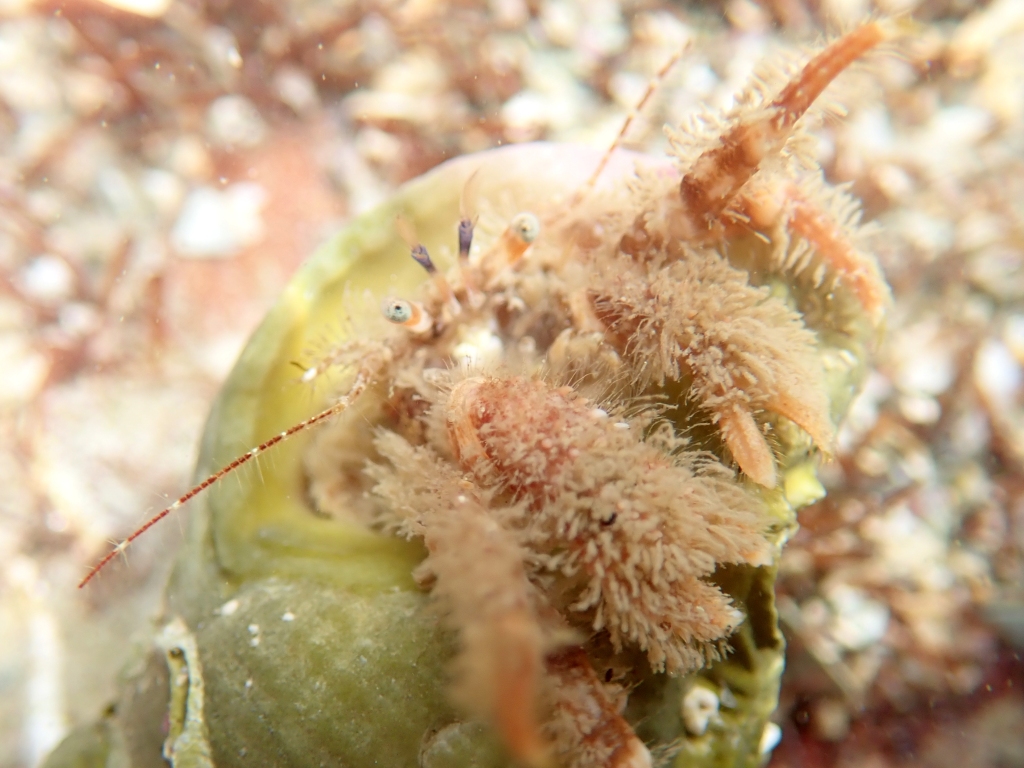There’s no collective noun, as far as I am aware, for a group of rock poolers, but if there was it would refer to bottoms in the air as that’s our standard position – head down, bottom up, searching for marine life. On the best tides it’s not unusual to find other rock pool fanatics on my local shore, drawn by the promise of rarely accessible habitats. So, during the spring tides of early March, I found myself in the company of the bottoms-up brigade at Hannafore, exploring one of our favourite shores.
Junior and his friends were with me, enjoying one of the endless field trips that usually make up our home educating life. Around us, life was churning along as usual despite the first Coronavirus cases being recorded in Cornwall a day or two before. With so many of good friends living elsewhere in Europe, we were only too aware of how quickly the situation might deteriorate, but while we were already starting to avoid indoor events and gatherings as far as we could, the open shore felt as good a place to be as any.

While the kids were building stone citadels and warring rocky villages at the top of the beach, I gave them vague instructions to come and find me soon and set off down the shore, following the receding tide over slippery rocks and frothing seaweed. I was joined by a friend from north Devon making a special guest appearance at Hannafore.
Among the boulders we discovered a tiny Montagu’s sea snail; a small tadpole-like fish with tiny eyes that tends to curl its tail round its head, looking more like a sleeping cat to me than a snail. These fish were soon turning up everywhere, with more than half-a dozen down a single gully.

Further along, a topknot flatfish was clinging to the rock with its sucker-fin, so perfectly blended with the colours of the stones and weed that only its fluttering gills and swivelling eyes gave it away.

A head popped up from a neighbouring gully, another marine biologist friend from the Marine Biological Association (MBA) was busy exploring, and across the lagoon, other friends from Bude Marine Group were approaching. Junior and his friends also abandoned their construction works and set out to explore the exposed reef armed with cameras to capture their adventures.

Despite a brisk, cold wind that was welding my fingers to my camera, the excitement of the finds stopped me from worrying about anything except what was in front of me. Sea slugs, quirky hydroids, and beautiful clingfish kept me occupied and there was still a little time before the tide would turn.

The egg cases of the larger of our two catshark species were plentiful on the rainbow wrack and a shout from my MBA friend brought the children running back – a newly-hatched baby Greater spotted catshark (Scyliorhinus stellaris).


Time always feels desperately short to explore this fabulous environment, but every second is full of wonder. Finding a hairy hermit crab made my day, if it wasn’t already made by just being there with so many fantastic and knowledgeable people.

The hairy hermit crab isn’t a common find on our local shores and this particular crab was exceptionally co-operative, emerging from its hiding place without hesitation which meant I could take photos and video of its incredibly hairy claws, its pale blue eyes and its stunning violet antennae.

This week I published the paperback of my book and shared the celebrations through video interviews and a recorded book reading.
Like all children, my son is doing his best to adapt to keeping in touch with friends and family from a distance and my other half is working from home. Some friends have been desperately ill and others still are putting their lives on the line every day as nurses and critical workers. Writing has felt pointless at times, impossible at other time and yet it seems important to share the beautiful things, because these will return.

The happy moments shared with my bottoms-up brigade of rock poolers, the exploration and the freedom may just be a memory at the moment, but I am reassured to know that life carries out there beneath the waves as it will here above. The wild creatures that make me catch my breath will still be there when all this is over. Friendships remain and my little community is showing strength, compassion and ingenuity to make sure we carry each other through.

Stay safe and watch this space for more colourful creatures to brighten your days, whatever they may bring.






Thanks, Heather, a great read as usual. I was thinking of suggesting the name “Up-bottomers” but …… perhaps not! Rob.
LikeLiked by 1 person
Thanks Rob… I think I’ll stick with ‘Bottoms-up brigade’ for now! 😀 Hope you’re safe and well. Heather
LikeLike
Hi, just come across your site. Good read thank you. Are we allowed to collect shells off the beach if they’re definitely empty?
LikeLiked by 1 person
Hi Patricia. Yes, so long as it’s just a shell or two for yourself and you’ve checked they are empty that’s fine. I know there are some beaches that suffer from erosion where they ask people not to remove pebbles, but in most places it’s not an issue. Happy beachcombing! Heather
LikeLike